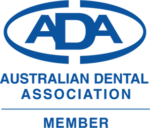Malocclusion, which is the misalignment of teeth, affects millions of people worldwide and is considered a significant oral health problem by the WHO. It is prevalent in children and adolescents, with estimates ranging from 39% to 93%.
In this blog, you will learn everything you need to know about malocclusion and its treatment.
What Is Malocclusion?


Malocclusion is a condition when a person’s teeth and jaw do not fit tightly or do not coincide when opening and closing the mouth. To specific, this can cause discomfort, pain, and difficulty eating or talking. Malocclusion can be classified in a variety of ways, including
The position of the teeth and jaw.
The number of teeth.
The deviation and angle of the jaw, and other issues.
Brackets, hooks, and straps may be used to correct malocclusion, although the method used will depend on the severity of the condition being treated.
Signs Of Malocclusion
It’s important to see a dentist if you notice any of the indicators of malocclusion, since some may be visible and others may be more subtle. Listed below are some of the most prevalent symptoms of malocclusion.
- Trouble eating or talking.
- Crooked, overlapping, overcrowded, or undercrowded teeth.
- Teeth that don’t fit together or bite correctly.
- Closed mouths have a space between upper and lower teeth.
- Eating might cause pain or discomfort.
- Signs of infection, gingivitis, bleeding gums, or sores.
- Face or jawbone is deformed.
If you think you have malocclusion, a trip to the dentist or orthodontist to have your teeth and jaw photographed may reveal the precise position and condition of your teeth and jaw. To learn about malocclusion treatments, see a dentist.
Forms Of Malocclusion By Edward H. Angle


Famous dentist Edward H. Angle classified malocclusion according to how the teeth are positioned on the jaw and how they connect to one another.
There are 3 main groups in this structure:
| Type | Treatment | |
Class I | In the case of Class I, the upper and lower teeth are close together, but the inner teeth are crowded or open. This is the most common type of malocclusion and does not cause serious health problems. However, if not treated in time, it can lead to tooth loss, tooth decay and a number of other dental problems. | Class I treatment is usually done by wearing a retainer to keep the teeth together and to make space for crowded or exposed teeth. In some cases, surgery is required to move the teeth into the correct position. |
Class II | The patient’s upper jaw protrudes forward relative to the lower jaw, causing the bite lines of the upper and lower teeth not fully aligning. Class II is divided into two categories:
| Dental professionals may use shaping devices or surgery to correct the position of the lower and upper teeth on the jaw. Therefore, treatment may also include the use of devices such as crowns or external forceps to help shape and move the teeth into the correct position. |
Class III | The patient’s lower jaw protrudes forward relative to the upper jaw, causing the bite lines of the upper and lower teeth to not fully align. This is a rare type of malocclusion, and if not treated promptly, it can cause breathing, talking, and eating problems. | For Class III treatment, dental professionals may use shaping devices or surgery to correct the position of the upper and lower teeth on the jaw. In some cases, it takes a long time to wear a fixative to move the teeth into the correct position. If surgery is needed, dental professionals can perform procedures such as cutting bones or moving bone plaques to help align the jaw and teeth. |
Causes of Malocclusion
Malocclusion is a frequent dental issue, particularly in young people. This disorder has serious aesthetic and health consequences. In fact, many individuals suffer from malocclusion, yet few understand that there are several root reasons.
Let’s investigate what makes certain people more prone to malocclusion so that we can better avoid it and cure it if it does occur:
- Heredity: Many instances of malocclusion are inherited, probably owing to jaw and tooth size and form.
- Bad habits: Sucking backward, using your hands to force your teeth, and nipping may develop malocclusion.
- Early tooth loss: If a person loses teeth early, other teeth may shift to fill the space, causing malocclusion.
- Jaw structure issues: If the jawbone doesn’t form correctly, malocclusion might result.
- Trauma: Facial and tooth trauma may induce malocclusion.
- Excessive alcohol and tobacco use: These habits can cause changes in the size of the jawbone and lead to malocclusion.
- Misuse of orthodontic equipment: Misuse of orthodontic appliances is a leading cause of malocclusion.
Several factors may influence the growth of the jaws and teeth in children, which may result in malocclusion.
The Effects Of Malocclusion


Malocclusion can cause various harmful effects on the health and development of the oral and maxillofacial organs. Some harmful effects of malocclusion include:
- Damaged teeth, gums, and jawbone: Teeth that are not properly aligned can cause teeth to overlap, teeth to tilt, or gaps between teeth, leading to an increased susceptibility to cavities, gum infections, tooth loss, and disease profit.
- Difficulty eating and talking: Malocclusion can make chewing food and talking difficult, causing discomfort and limitations in communicating with others.
- Pain and discomfort: Foreign bodies in the teeth and jaw can cause pain, discomfort, shortness of breath, and headaches.
- Effects on the face: Malocclusion can cause the face to become distorted or misaligned, affecting the beauty of the face.
- Increased disease risk: Malocclusion can cause teeth to be difficult to clean leading to a buildup of bacteria, which, if left untreated, can lead to health problems like gum disease, sore throats, and inflammation sinuses.
Therefore, treatment of malocclusion is essential to help improve oral health and promote the growth of the oral and maxillofacial organs.
How To Avoid Malocclusion?
Some ways to avoid malocclusion are:
- Adjust eating habits: avoid eating too many soft and easy-to-chew foods, instead, eat more foods rich in fiber and need chew more, helping to promote jaw development.
- Adjust drinking habits: avoid using bottles or jars with suction cups, instead, use cups to drink, which minimizes pressure on jaw muscles and teeth.
- Do jaw and neck exercises: Regularly practice exercises to strengthen the jaw and neck muscles, helping to improve the development of the jaw and teeth.
- Treat dental problems early: Treating problems like cavities, gum infections, and gingivitis early can help avoid more serious problems like malocclusion.
- Seek professional dental care: get regular dental checkups and routine dental cleanings to detect and treat dental-related problems early.
- Adjust the shape of your mouth when you sleep: if you sleep on your side, use pillows to support and reduce pressure on your jaw muscles and teeth.
Conclusion


While it is impossible to totally eliminate malocclusion, the preceding measures may help minimize the likelihood of malocclusion and diminish its effect. Please see your dentist or doctor as soon as possible if you are experiencing any dental issues.
Making a dentist appointment is the first and most crucial step in getting the dental treatment we need. Spring Orchid Dental is the place to go if you need an experienced and trustworthy dentist. At our practice, we are dedicated to providing you with the highest quality dental treatment possible so that your smile may be bright and healthy.
Spring Orchid Dental Clinic is one of the leading addresses in the field of oral care:
- We have a group of dentists on staff who are both skilled and knowledgeable in their fields.
- We provide a comprehensive variety of dental treatments, including children’s dentistry, from oral care to craniofacial issues.
Come to Spring Orchid dental clinic for healthy teeth and a bright smile. Book a dental appointment at Spring Orchid dental today to experience the best service!
FAQs
Is the treatment of malocclusion painful?
The treatment of malocclusion can cause pain and discomfort in some cases. However, pain can vary depending on the extent and type of malocclusion of the individual patient, as well as the treatment used.
For example, if you are prescribed aligners, you may experience discomfort for the first few days, as your jaw muscles and teeth are adjusted to wearing the aligners. Also, when your doctor adjusts the bone structure of your jaw muscles, you may feel some soreness after the treatment is complete. However, home remedies for pain and swelling, such as using an umbilical cord bandage or taking pain relievers, can help relieve pain and discomfort.
If you are concerned about the pain and discomfort of your treatment, discuss it with your doctor to better understand the treatment process and possible measures to reduce pain and discomfort.
Your dentist may want to take dental X-rays in certain circumstances to ensure that no tooth fragments were lost in the extraction process.
Is malocclusion checked at frequent dental visits?
Visits to the dentist on a regular basis not only aid in the early detection of dental problems but also in the prevention and treatment of issues before they worsen. See a dentist for guidance and an examination if you experience symptoms of malocclusion or are worried about your dental health.
Dentistry also provides care for malocclusion and other dental issues, as well as preventative measures to help maintain teeth in good shape.
Can I self-treat malocclusion?
No, you can’t. Do not attempt to correct a malocclusion without first seeing a dentist. Correction of malocclusion is an involved procedure that calls for expert-level knowledge and abilities.
Self-treatment of malocclusion, without the guidance of a dentist, may have unintended consequences and potentially make the condition worse.
If you think you may have a misaligned bite or any other dental issue, you should see a dentist as soon as possible for an examination and treatment recommendations.





